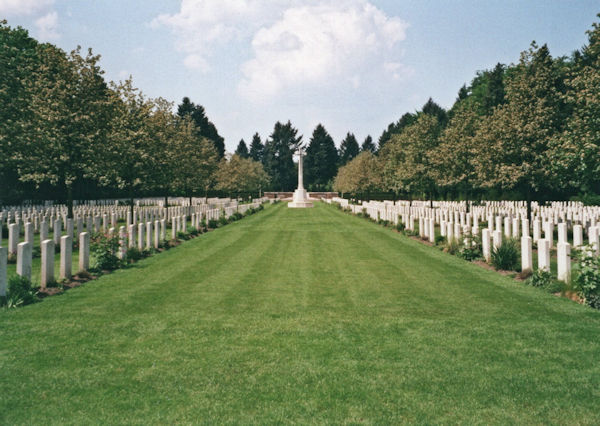Name
Harold George Dyer
1893
Conflict
First World War
Date of Death / Age
15/08/1918
25
Rank, Service Number & Service Details
Private
242084
Lincolnshire Regiment
2nd/5th Bn.
Awards: Service Medals/Honour Awards
British War and Victory medals
Cemetery/Memorial: Name/Reference/Country
COLOGNE SOUTHERN CEMETERY
XVII. B. 14.
Germany
Headstone Inscription
None
UK & Other Memorials
Hemel Hempstead Town Memorial, St Mary's Church Memorial, Hemel Hempstead
Pre War
Harold George Dyer was born in Hemel Hempstead, Herts in 1893, the eldest child of George and Charlotte Dyer and one of 4 children, although one died shortly after birth.
On the 1901 Census the family were living at Laurel Bank, South Hill Road, Hemel Hempstead, where his father was working as a Carpenter/Joiner. They later moved to 3 Queen Street, Hemel Hempstead. Harold then left school and went to work at John Dickinson & Co Ltd at Apsley Mills as a Clerk in the Envelope Department. His mother ran a General Store on Queen Street.
His parents later lived at Alexandra Road, Hemel Hempstead.
Wartime Service
Harold was called up to join the army after the passing of the Military Services Act in January 1916 and enlisted at April, being posted to the 2/5th Battalion, Lincolnshire Regiment for basic training in October.
He was sent to France on 23 February 1917, arriving at Le Havre the following day and was in billets at Bayonvillers near Amiens by the end of the month. He saw action on 11 April during an attack on The Quarry and Cologne Farm near Hargicourt. It was understood that the enemy were leaving but the reports were false and they were forced back by the enemy, suffering heavy casualties. Later in the year he fought in the Battles of Polygon Wood and Cambrai,
The German Spring Offensive began in March 1918 and the Battalion were ordered to advance and occupy second line trenches at Bullecourt, but the enemy had overrun the second line and three companies were cut off at Noreuil. Forty nine men were killed and the rest were taken prisoner. Harold was one of the prisoners and they were taken to Camp II at Munster, Germany. Harold had been wounded during the fighting and received medical attention, however his health was poor and four months later he contracted pluerisy and died on 15 August 1918, aged 25. A letter from the British representative of the Camp, B Fitzsimons, was reported in the local newspaper, informing his family that he had died, had been buried on 17 August and that his comrades placed a floral tribute on his grave.
Additional Information
His father received a war gratuity of £10 and pay owing of £36 10s 10d. His mother received a pension of 5 shillings a week.
Acknowledgments
Brenda Palmer
Jonty Wild, www.hemelheroes.com., www.dacorumheritage.org.uk.



